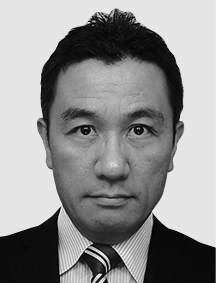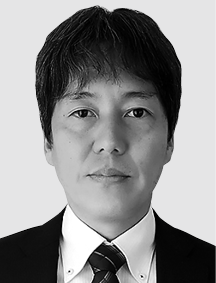Hitachi’s smart therapy business is working on improving patient QoL during cancer treatment through minimally invasive treatment methods using particle beams. Particle therapy has recently been attracting interest for its potential to improve patient QoL. It offers several benefits. For example, it creates little treatment impact on the patient, making it suited for use on seniors. It also enables outpatient treatment or earlier discharge after treatment. Hitachi can provide particle therapy systems using multiple ion species such as proton and carbon ions, and provides treatment at over 20 Japanese and overseas facilities. To further improve patient QoL, the company is planning co-creation projects with customers to develop new technologies drawing on dose concentration. Hitachi is aiming to make these technologies more widespread by providing solutions driven by digital technologies that use facility operation and treatment data.



Radiation therapy is one of the methods used to treat cancer. With the number of cancer sufferers expected to continue growing worldwide, radiation therapy is expected to become increasingly widespread since it performs well in preserving patient quality of life (QoL) during and after treatment(1).
Particle therapy is a type of radiation therapy that uses proton or carbon ions. It can utilize the physical properties of these particles to increase the concentration of the radiation dose applied to tumors. This type of therapy has recently been growing in popularity due to the large number of benefits it offers. For example, it lessens the treatment impact on the patient’s body, making it suited for use on seniors. It also enables outpatient treatment and faster discharge after treatment.
Meanwhile, particle therapy requires larger and more expensive equipment than conventional radiation therapy using X-rays. There are also technical obstacles that stand in the way of successful treatment using the properties of particle beams. The future growth of this market will therefore likely require smaller and cheaper systems, along with mechanisms to help enable their adoption by a wide range of customers. Hitachi’s particle therapy business mainly provides particle therapy systems through collaborative creation (co-creation) projects with customers. The company is working to expand these activities by starting and growing a smart therapy business that will do more than just provide therapy systems. It will be designed to provide a wide range of solutions and services for cancer therapies in general.
This article describes the previous work Hitachi has done on particle therapy systems, along with the direction the company wants to take in the future.
Particle therapy is gaining ground in the West and in Asian countries such as Japan. There are currently 98 facilities in operation worldwide (as of September 2020). Categorized by radionuclide use, 91 facilities use only proton beams, six use only carbon ions, and six use both. About 220,000 patients had been treated by the end of 2018 (about 190,000 by protons, and about 28,000 by carbon ions)(2). There are 23 operational facilities in Japan, of which 17 use only proton beams, five use only carbon ions, and one uses both. Some 51,000 patients have been treated, of which 29,000 were treated with proton beams and 22,000 were treated with carbon ions (as of the end of 2018)(3). Public insurance policies in Japan began covering proton therapy for pediatric cancer and carbon ion therapy for treatment of bone and soft tissue tumor in April 2016. Coverage was subsequently expanded to head, neck, and prostate cancers in April 2018.
Figure 1 — Hitachi’s Particle Therapy System Lineup
 Hitachi can provide proton therapy systems, carbon ion therapy systems, and hybrid systems that can use both.
Hitachi can provide proton therapy systems, carbon ion therapy systems, and hybrid systems that can use both.
Hitachi’s lineup of particle therapy systems includes proton therapy systems with a rotating gantry room, carbon ion therapy systems with a fixed irradiation room, and hybrid therapy systems with both (see Figure 1).
The list of customers and markets that have adopted Hitachi’s particle therapy systems keeps growing every year. The company’s particle therapy business joined with a Mitsubishi Electric Corporation business unit in June 2018, resulting in deliveries or contracts with 19 facilities in Japan (18 of which have begun treatment; see Figure 2). Overseas markets are seeing growth in the USA, Europe, and Asia. Hitachi has signed contracts with 13 facilities overseas, of which seven have begun treatment (see Figure 3). More than 53,000 patients have been treated with Hitachi therapy systems to date (end of 2017), and more than 7,000 were treated annually (in 2017).
Hitachi can provide proton therapy systems ranging from relatively inexpensive single-room systems with reduced installation area, to multiple-room systems.
Since the last report in Hitachi Review (2016)(4), Hitachi proton therapy systems went into operation in the USA at two Mayo Clinic facilities and at St. Jude Children’s Research Hospital in 2015–2016. In Asia, Hitachi received orders for proton therapy systems from the Hong Kong Sanatorium & Hospital and the National Cancer Centre Singapore in 2016. The company’s first European order was subsequently received in 2017 from Clínica Universidad de Navarra in Spain, and the first order for a compact system specialized for a single-room was received from Tokushukai Medical Group in 2018. In 2019, an order for a single-room system was received from Italy’s National Center of Oncological Hadron therapy.
The company also provides expandable systems that are initially installed as single-rooms and allow treatment rooms to be added to a building built beforehand without shutting down treatment once operation has started (see Figure 4). The first such system became operational at Spain’s Clínica Universidad de Navarra in April 2020 (see Figure 5).
Hitachi’s Heavy Ion Beam Therapy System is a carbon ion therapy system equipped with a scanning irradiation system in all rooms. It was delivered to the Osaka Heavy Ion Therapy Center and began treatment in October 2018. Another carbon ion therapy system ordered in April 2018 by Taipei Veterans General Hospital is Taiwan’s first heavy ion beam therapy system.
In May 2019, Himed Hospital Management, Co. Ltd. located in the Chinese city of Xuzhou (Jiangsu province) ordered a hybrid particle therapy system that can use both proton beams and heavy ion beams by using the properties of synchrotron accelerators that can accelerate multiple ion species.
Upon delivery of the particle therapy system, Hitachi was able to provide all the system requirements as a package, including the equipment and systems needed for particle therapy (such as the diagnostic equipment and treatment planning software), installation of the particle therapy system, and post-delivery maintenance service.
Figure 6 — Patient Positioning Automation Software Developed by Hitachi
 Positions the patient precisely by performing three-dimensional (3D) image matching of the computed tomography (CT) image taken before treatment, and the cone beam computed tomography (CBCT) image taken on the day of treatment.
Positions the patient precisely by performing three-dimensional (3D) image matching of the computed tomography (CT) image taken before treatment, and the cone beam computed tomography (CBCT) image taken on the day of treatment.
Particle therapy can lessen the impact of treatment on the patient’s body by concentrating as much radiation as possible on tumors while avoiding normal tissue. Hitachi has worked on developing technologies that use this characteristic to maximum advantage. One is a scanning radiation technology currently in mainstream use in particle therapy. Hitachi was the first in the world to release this technology(5), which has been adopted worldwide.
Scanning technology prevents the particle beam from dispersing and instead keeps it narrow while sequentially changing the position of irradiation. This technology is used in Hitachi systems to enable intensity modulated particle therapy (IMPT). IMPT freely controls the dose distribution of particle beams radiated from multiple directions to concentrate the dose on the tumor and reduce the dose on normal tissue when the tumor has a complex shape or is surrounded by normal tissue. To derive maximum effectiveness from this irradiation method, Hitachi also delivers treatment planning software for particle therapy that it creates in-house.
The company has also been working to popularize and expand the applicability of particle therapy by developing a series of technologies designed to make therapy as easy to use as possible when it requires advanced techniques. Patient positioning is an important requirement when using particle therapy. Hitachi has improved patient positioning accuracy and improved patient throughput by providing image-guided patient positioning software with a range of useful functions. For example, it has a 2D/3D matching function for use with both proton beam rotating gantry treatment rooms and carbon ion fixed beam rooms. The function compares the two-dimensional (2D) image obtained during therapy with a three-dimensional (3D) computed tomography (CT) image used as a reference. The software also has a cone beam computed tomography (CBCT) imaging function mounted in proton beam rotating gantries, and a 3D/3D matching function that uses CT installed separately in the same carbon ion treatment room (see Figure 6).
To bring particle therapy to a greater number of patients, Hitachi has developed technologies for the highly common cancers of the lung and other moving organs. The Real-time Image-Gating technique developed by Hitachi and Hokkaido University can be used to enable more accurate particle-beam irradiation of moving tumors by tracking the position of a gold marker implanted near a tumor on a 2D X-ray image. This technique has been developed through a collaborative research between Hitachi and Hokkaido University on a national project undertaken through Japan’s Funding Program for World-Leading Innovative R&D on Science and Technology. It was entitled the Advanced Radiation Therapy Project: Real-time Tumor-tracking with Molecular Imaging Technique. It resulted in the creation of practical scanning irradiation technique for moving organs that brings spot scanning technique developed by Hitachi together with tumor tracking technique developed by Hokkaido University(6). The invention co-created through the development work was selected for the highest award at the 2017 National Commendation for Invention, the Imperial Invention Prize(7). By taking part in the type of co-creation with customers described here, Hitachi will continue developing new technologies to improve particle therapy.
By using synchrotron accelerators enabling extraction of variable energy, Hitachi’s particle therapy systems enable efficient energy use that generates cost benefits such as lower utility costs and thinner concrete shielding walls.
The company also provides a maintenance service for particle therapy systems. It is designed to maintain or improve service quality based on Hitachi’s experience that has proven effective at enabling high utilization. Preventive maintenance is scheduled on weekends to minimize treatment shutdowns in weekdays. The service also boosts maintenance team and maintenance parts management efficiency at all 19 facilities in Japan (including facilities under construction), while using remote maintenance to try to prevent systems from shutting down treatment. This high utilization system in combination with a higher total system throughput (including treatment preparation time), smaller equipment sizes, and lower initial installation costs lets Hitachi provide customers with highly cost-effective systems that meet their needs.
Hitachi’s particle therapy business has been part of the company’s Smart Life sector since May 2019. It is one of the Hitachi segments that work on finding solutions to issues of public concern by tackling the areas of health, safety, and comfort. It aims to use particle therapy to create cancer treatments that preserve patient QoL. Crucial to achieving this aim are reducing the size and cost of particle therapy systems, adding more value to systems, and growing the particle therapy market itself. To reduce size and cost, Hitachi is considering sweeping changes to the conventional equipment configuration of a particle beam accelerator and a rotating gantry. The targeted improvement would transform particle systems into viable replacements for conventional X-ray based radiation therapy equipment.
Hitachi also wants to add more value to systems by further improving patient QoL during and after treatment. Attaining this goal requires increased dose concentration to further reduce damage to normal tissue. Being able to apply a highly concentrated particle dose to tumors is thought to help lessen patient load and enable therapy with high QoL. Hitachi is working on developing adaptive radiation therapy solutions that provide treatment tailored to daily changes in the patient’s condition by using recent advances in imaging technology along with digital technologies that incorporate artificial intelligence (AI).
Adaptive radiation therapy has more complex treatment workflows since it involves monitoring the condition of the patient and tumors during treatment, and carrying out processes such as planning reviews as the need arises. So alongside technologies for improving patient positioning accuracy, it also requires technologies for reducing the workload of the treatment workflow. Hitachi is using its existing customer network to develop these technologies with assistance from the Japan Agency for Medical Research and Development (AMED).
The company is also working to grow the radiation and particle therapy market itself by generating evidence in support of proton therapy. These activities include work on a USA joint research project involving clinical trials for radiation therapy using X-rays and proton beams to treat head and neck cancers, along with a joint research project examining the effectiveness and predicting prognoses for radiation therapy using genome information. Hitachi is working with hospitals and medical organizations on a wide range of co-creation activities to research and develop digital solutions making use of the company’s past medical exam data and accumulated treatment expertise.
Hitachi provides assistance to enable cancer treatments individually tailored to patients and a stable supply of advanced medical care. These efforts help yield ongoing benefits such as bringing peace of mind to a greater number of patients, improving medical technologies, ensuring stable operation of medical equipment, and improving hospital administration.